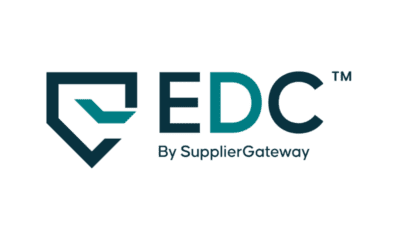You know that nagging feeling that the healthcare industry is changing fast, but procurement strategies aren’t keeping up? As a healthcare leader, you’ve seen firsthand how the pace of innovation in medical technologies, treatments, and care delivery models threatens to outstrip traditional purchasing processes.
Rigid multi-year contracts and slow evaluation cycles simply can’t accommodate the rapid transformations in healthcare. The solution is agile buying – flexible, iterative procurement methods tailored for an industry where change is the only constant.
Agile buying means collaborating with suppliers as partners, not just vendors. It means shorter contracts, faster pilots of new solutions, and a willingness to fail fast and move on. For healthcare organizations striving to improve outcomes, reduce costs, and keep up with the latest medical advancements, agile buying strategies are no longer a “nice to have” but an absolute must-have.
The future of healthcare depends on procurement catching up with the pace of change. Are you ready to make your purchasing agile?
What Is Agile Procurement and Why It Matters for Healthcare
Agile procurement is a new, faster, and more flexible way of buying goods and services. For healthcare organizations, it’s an absolute game changer.
Some key points about agile procurement that you should know:
- Agile procurement speeds up selection processes. The days of multi-year RFPs and vendor evaluations are over. Agile methods get new technology and resources in the door fast, so you can start improving patient care immediately.
- Agile procurement leads to a transparent organizational structure. Cross-functional teams are more valued than hierarchy and experience. Staff are empowered to make decisions and try new things. Fresh perspectives drive innovation.
- Agile procurement enhances a dynamic environment. Healthcare changes constantly, and agile procurement adapts quickly to new technologies, treatments, and patient needs. Lengthy buying cycles simply don’t keep pace any longer.
- Agile procurement boosts patient-care efforts. When you implement new solutions faster, you get better outcomes. Agile procurement supports coordinated care, reduces errors, and improves quality of life. Patients deserve nothing less.
The future of healthcare depends on agility. Agile procurement principles emphasize speed and flexibility, which benefit healthcare organizations and the people they serve. It’s time to rethink old buying methods and embrace a new approach that meets the demands of a rapidly evolving industry.
The Benefits of Agile Procurement for Hospitals and Health Systems
Agile procurement allows hospitals and health systems to speed up their buying processes. This means being able to provide the latest treatments, technologies, and facilities to patients faster.
Agile procurement reduces red tape and documentation that bogs down traditional buying methods. Rather than a lengthy requirements-gathering phase followed by an RFP process that can take months, cross-functional teams evaluate options and make selections in weeks.
This faster speed means hospitals can complete critical projects sooner. A new surgical wing updated diagnostic equipment, or an electronic health record system can be operational in a fraction of the usual time. Patients gain access to the latest medical resources faster, and hospitals can start recouping costs quicker.
Agile procurement also makes organizations more responsive to changes. In healthcare, new drugs, devices, and software are constantly emerging. An agile buying approach allows hospitals to adapt to innovations and take advantage of new solutions right away. They can also adjust to shifts in patient needs or public health issues with more flexibility and speed.
The benefits of agile procurement for healthcare are clear: reduced costs, improved quality of care, increased patient and staff satisfaction, and a competitive edge. In an industry where responsiveness can truly be a matter of life and death, agile procurement strategies are enabling hospitals to make a real difference.
Best Practices for Implementing Agile Buying Strategies
To successfully implement agile buying strategies in healthcare, follow these best practices:
Build a Dedicated Team
Form an interdepartmental team focused specifically on procurement transformation. Include stakeholders from IT, finance, clinical areas, and supply chain. Leverage specialized procurement technology and tools to work collaboratively and share information in real-time.
Increase Collaboration
Increase collaboration between your organization and critical suppliers. Meet regularly to provide feedback on current contracts and plan future initiatives together. Suppliers can suggest innovative solutions to improve services and lower costs. Fostering these partnerships will lead to better outcomes for both parties.
Simplify Processes
Simplify and standardize your procurement procedures. Minimize complexity and redundancy. Automate repetitive tasks like purchase order creation and invoice processing. Review current policies and get rid of outdated rules that hinder agility. The easier you make it for people to do the right thing, the more adoption you’ll gain.
Obtain Early Input
Obtain input from internal stakeholders early and often. Talk to doctors, nurses, department heads, and others about their supply and service needs. Incorporate their feedback into planning discussions with suppliers. Make sure new contracts meet end-user requirements before finalizing terms. Constant communication and course correction are hallmarks of an agile approach.
Measure and Improve
Continuously measure the performance of your agile procurement strategies and make improvements. Monitor critical metrics like spend under management, savings achieved, and end-user satisfaction. Benchmark your progress against industry standards. Be willing to tweak or overhaul initiatives that aren’t delivering the desired results. An agile strategy is ever-evolving.
Following these best practices will help ensure your organization’s move to agile buying strategies in healthcare is a success. By building a dedicated team, increasing collaboration, simplifying processes, obtaining early stakeholder input, and continuously improving, you’ll be able to significantly enhance procurement operations and outcomes.
For a more in-depth discussion of agile procurement, check out this webinar.
Case Studies: How Leading Healthcare Organizations Achieved Success With Agile Procurement
Karlstad Hospital: A Complex Banking Solution
The Karlstad Hospital in Sweden needed to procure a new core banking system, a complex process that typically takes 12-18 months using traditional methods. They decided to try an agile approach instead. Working closely with suppliers, they were able to procure and implement a solution in just 6 months.
How did they do it? They began by mapping out the key requirements and then searched for suppliers that could meet 80% of their needs. Rather than issuing an official RFP, they invited a shortlist of vendors to discuss solutions. This allowed for an open dialog to understand available options better.
They chose two finalists and had them prototype their solutions. This “test drive” approach allowed the hospital to experience the systems firsthand and provide feedback, so the final solutions were well-matched to their needs. Contracts were then negotiated based on a target budget and timeline.
By staying flexible in their requirements, focusing on business outcomes, and collaborating closely with suppliers, Karlstad Hospital was able to procure a vital system in record time using lean-agile methods. Their success demonstrates how healthcare organizations can achieve significant benefits from an agile procurement strategy.
CMS: Modernizing Healthcare in Months
The US Centers for Medicare & Medicaid Services (CMS) needed to modernize their healthcare data systems, a process that would typically take 3-5 years using standard procurement. They decided to try an agile approach instead. By working with vendors in short sprints, CMS was able to overhaul and integrate systems in just 10 months.
How did they do it? They began with a vision for the end-to-end solution and then searched for vendors to collaborate on different components. Winning bidders were chosen based on their ability to work iteratively and meet milestones. Multi-vendor teams then worked in sprints to build, test and deploy solutions. Continuous feedback from CMS allowed for adjustments along the way.
By embracing an agile mindset, focusing on outcomes, and close collaboration, CMS achieved success through a fast, flexible procurement approach. Their achievement is a compelling example of how agile strategies can accelerate digital modernization in healthcare.
FAQs: Common Questions About Agile Procurement for Healthcare Answered
What exactly is agile procurement?
Agile procurement uses flexible and adaptable strategies to improve the purchasing process. Rather than strict annual budgets and long-term contracts, agile procurement focuses on speed, collaboration, and responsiveness to change. Teams can quickly evaluate options and adjust as needed to get the best outcomes.
How does agile procurement benefit healthcare?
Healthcare moves fast, and agile procurement helps organizations keep up. As technologies, treatments, and medical devices rapidly advance, agile procurement makes it easier to acquire the latest innovations. It also allows for fast responses in emergencies or unforeseen circumstances.
Do we have to completely overhaul our current procurement process?
No, agile procurement builds upon existing practices. You can start small by applying agile strategies to specific areas or purchases. Focus on more flexible budgeting, collaborative relationships with suppliers, and streamlined approval workflows. As teams get experience, agile techniques can be scaled up gradually.
What tools and software support agile procurement?
Healthcare supply chain software with eProcurement, eInvoicing, and analytics capabilities enable agile purchasing. These systems provide:
- Real-time data on spending and contracts to make fast, informed decisions.
- Automated workflows to speed up the procure-to-pay cycle.
- Supplier collaboration tools to find the best partners and deals.
- Spend analysis reports to identify new opportunities for agile purchasing approaches.
How can we get started with agile procurement?
- Educate your teams on the benefits and processes of agile purchasing.
- Review current procurement policies and look for ways to build in more flexibility and responsiveness.
- Start with a small purchase or department and pilot agile techniques. Evaluate and scale up the approach.
- Leverage healthcare supply chain technology to gain the data insights and process efficiency required for agile procurement.
- Build collaborative relationships with key suppliers to work together on innovative solutions.
Agile procurement may require new ways of thinking, but it enables healthcare organizations to navigate change and come out ahead. With the right strategies and tools, it can transform purchasing from a rigid process into a strategic advantage.
Conclusion
You owe it to your patients and community to explore agile healthcare procurement now. The old ways of buying aren’t cutting it and people’s lives are on the line. Agile strategies can help you acquire the latest medical technologies faster, build a more nimble supply chain, increase transparency, and boost patient satisfaction. At the end of the day, you got into healthcare to help people. Agile purchasing is how you can achieve that mission and gain a competitive edge. What are you waiting for? The future of healthcare is here – go get it. The time for agile is now.












